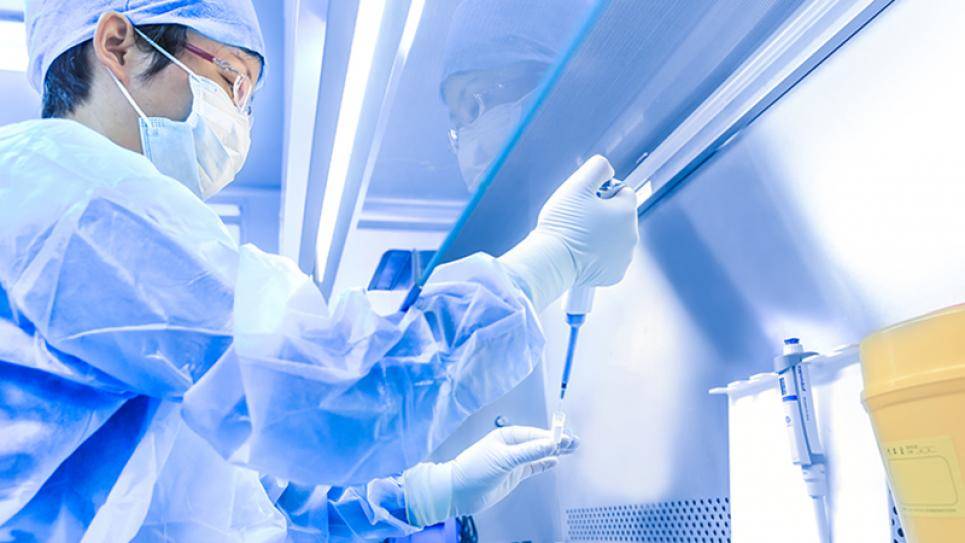
In January of 2020, the International Health Regulations Emergency Committee of the World Health Organization announced the outbreak of coronavirus disease 2019 (COVID-19). Clinical presentations of active cases of COVID-19 range from no symptoms to life threatening illness. The scientific and medical communities are learning more every day, but currently it is believed that COVID-19 is transmitted through sneezing and coughing or through contact with contaminated surfaces.
According to the US CDC, decontaminating for COVID-19 through standard procedures is appropriate. The World Health Organization’s interim guidance on laboratory biosafety, disinfection procedures for COVID-19 recommends: “Appropriate disinfectants with proven activity against enveloped viruses … (e.g. hypochlorite (bleach), alcohol, hydrogen peroxide, quaternary ammonium compounds and phenolic compounds).”
Recent bio-decontamination work performed by Cleamix Oy at Korea’s Centers for Disease Control has validated this approach, and the company performed hydrogen peroxide vapor bio-decontaminations in early 2020 during the coronavirus outbreak. The Cleamix bio-decontamination units are portable, highly efficient hydrogen peroxide vapor generators. The generators use Vaisala’s HPP270 series probes to automatically control vapor output during bio-decontamination. The probes also provide stable, accurate monitoring data that allows operators to observe process conditions in real-time.
Bio-decontamination of Biosafety Labs
We recently spoke with Cleamix CEO Panu Wilska about the company’s work with Korea’s Centers for Disease Control (KCDC) in the wake of the coronavirus outbreak.
“The KCDC has Biosafety level 2 and 3 laboratories with a total volume 2500 m3,” says Wilska. “Our bio-decontamination contract with our local partner BioAll included both laboratories. The labs were about equal in size, with multiple separate rooms, airlocks and corridors. To decontaminate the spaces we used four portable networked Cleamix vapor generators.”
Biosafety laboratories are used to study contagious materials safely; with protective measures for personnel and to prevent contamination. Biosafety labs are designed and operated in compliance with laws, policies, regulations, and guidelines for research into infectious agents. This research is needed to understand pathogens in order to produce vaccines and other treatments.
There are four levels of biosafety that define the type of research that can be performed and the safety measures that must be employed. These levels are based on the practices, processes and systems that provide protection from the pathogens being researched. From BSL-1 to BSL- 4, the protective barriers and processes increase. Biosafety level 1 covers work with microorganisms that present a minimal threat. Biosafety level 2 laboratories research agents with a moderate risk. Extra cautions and protections are used, with added constraints on access and processes. BSL-2 labs use biosafety cabinets and other containment systems.
Biosafety level 3 laboratories handle potentially lethal pathogens, are strictly controlled, must be registered with governing agencies, and have strict bio-decontamination procedures. BSL-3 labs require specialized facility design features, including airflow/ventilation controls, automatic and locking double doors. Biosafety level 4 laboratories encompass research on extremely high-risk pathogens or any agent with an uncertain level of pathogenicity. These labs employ the strictest safeguards, constraints, regulations, facility design and equipment requirements.
Inline H2O2 Concentration Measurement: Effective, Efficient
“During the bio-decontamination process, the HPP270 probes showed that the H2O2 concentration was rising quite rapidly,” says Wilska. “The average treatment time per segmented area was seventy-five minutes, plus aeration time. Aeration was very fast as we could have the air conditioning system turned on after each treatment. The process was validated by biological indicators to have achieved a 6-log kill.”
In bio-decontamination, a 6-log kill refers to the relative number of live microbes destroyed during disinfection. A 1-log kill has destroyed the total number of microbes by a factor of 10; a 6-log kill has destroyed the number of microbes by a factor of 1,000,000. A 6-log reduction is a common goal of bio-decontamination, whereas the goal of sterilization is to kill all microorganisms, viruses, and spores. Bio-decontamination is used due to its relative safety for operators, equipment and materials.
In summarizing Cleamix’s work at the KCDC, Wilska says:
“Our bio-decontamination took two working days; however, now that we know the layout and decontamination performance of these areas, the same work could be completed in one day. According to KCDC, the earlier procedure with a different vendor took four days to complete. After seven days of incubation, the results of our bio-decontamination were confirmed without any doubt – the process was 100% successful.”
Read more